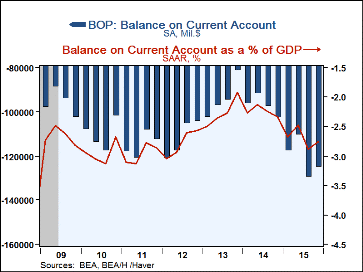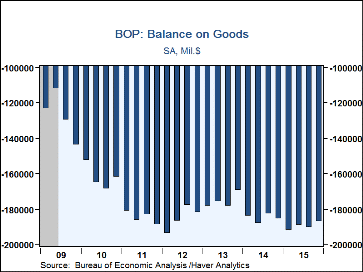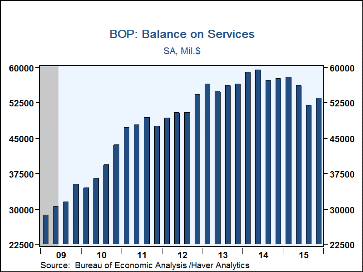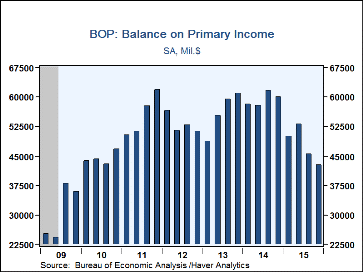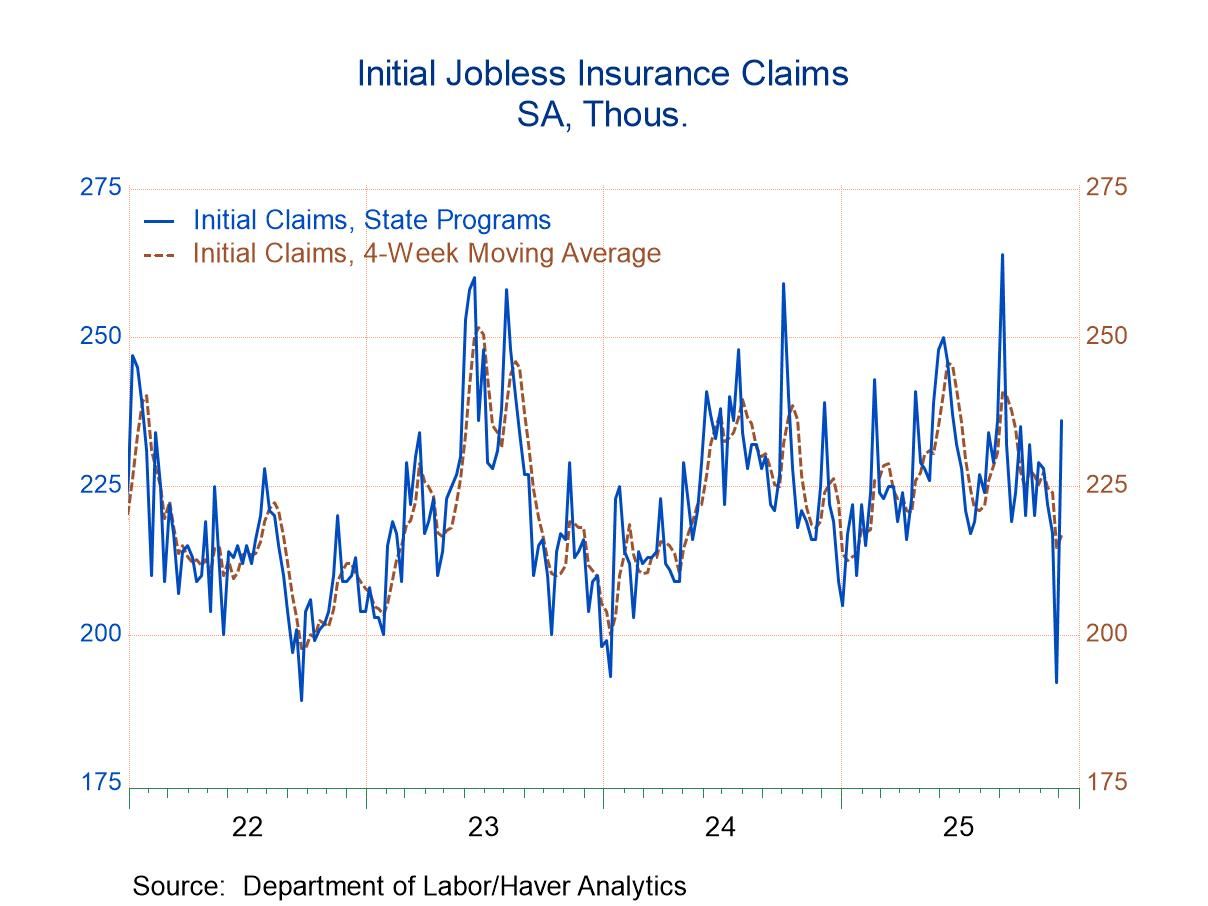 Global| Mar 18 2016
Global| Mar 18 2016U.S. Current Account Deficit Deepens in 2015
by:Tom Moeller
|in:Economy in Brief
Summary
The U.S. Current Account Deficit deepened to $484.1 billion during 2015 from $389.5 billion in 2014. It was the largest deficit since 2008 and amounted to 2.8% of GDP. For the fourth quarter alone, the deficit eased to $125.3 billion [...]
The U.S. Current Account Deficit deepened to $484.1 billion during 2015 from $389.5 billion in 2014. It was the largest deficit since 2008 and amounted to 2.8% of GDP. For the fourth quarter alone, the deficit eased to $125.3 billion versus $129.9 billion in Q3. A $116.3 billion deficit had been expected in the Action Economics Forecast Survey.
The deficit on merchandise trade deepened to $759.3 billion last year from $741.5 billion in 2014. It was the largest shortfall also since 2008, and reflected a 7.3% decline in exports versus a 4.3% drop in imports. During the fourth quarter, the deficit eased to $187.3 billion from $190.5 in Q3, though the 3.4% decline in exports, which totaled $366.7 billion, outpaced the 2.8% drop in imports, which totaled $554.0 billion.
The services trade surplus eased to $219.6 billion last year from $233.1 billion in 2014, as exports (which totaled $710.2 billion) remained little-changed. Imports, which totaled $490.6 billion, were off 2.8%. During the fourth quarter, the surplus on services trade grew to $53.5 billion from $51.9 billion. A 1.0% increase in exports outpaced the 0.2% improvement in imports.
The surplus on primary income declined to $191.3 billion, its smallest surplus in five years. The deficit on secondary income deteriorated to a record $135.6 billion. During Q4, the surplus on primary income continued on its downward trend to $42.8 billion, while the deficit on secondary income eased to $34.3 billion.
Balance of Payments data are in Haver's USINT database, with summaries available in USECON. The expectations figure is in the AS1REPNA database.
| US Balance of Payments SA | Q4'15 | Q3'15 | Q2'15 | Y/Y | 2015 | 2014 | 2013 |
|---|---|---|---|---|---|---|---|
| Current Account Balance ($ Billion) | -125.3 | -129.9 | -110.8 | -103.1 | -484.1 | -389.5 | -376.8 |
| Deficit % of GDP | 2.8 | 2.9 | 2.5 | 2.3 | 2.6 | 2.2 | 2.2 |
| Balance on Goods ($ Billion) | -187.3 | -190.5 | -189.3 | -186.0 | -759.3 | -741.5 | -702.6 |
| Exports | -3.4% | -1.3% | 0.5% | -10.4% | -7.3% | 2.5% | 1.9% |
| Imports | -2.8% | -0.7% | -0.2% | -6.9% | -4.3% | 3.5% | -0.4% |
| Balance on Services ($ Billion) | 53.5 | 51.9 | 56.2 | 57.6 | 219.6 | 233.1 | 224.2 |
| Exports | 1.0% | -1.1% | -0.6% | -1.2% | -0.1% | 3.3% | 4.8% |
| Imports | 0.2% | 1.9% | 0.5% | 1.6% | 2.8% | 3.0% | 2.6% |
| Balance on Primary Income ($ Billion) | 42.8 | 45.4 | 53.1 | 60.0 | 191.3 | 238.0 | 224.5 |
| Balance on Secondary Income ($ Billion) | -34.3 | -36.7 | -30.8 | -34.8 | -135.6 | -119.2 | -122.9 |
Tom Moeller
AuthorMore in Author Profile »Prior to joining Haver Analytics in 2000, Mr. Moeller worked as the Economist at Chancellor Capital Management from 1985 to 1999. There, he developed comprehensive economic forecasts and interpreted economic data for equity and fixed income portfolio managers. Also at Chancellor, Mr. Moeller worked as an equity analyst and was responsible for researching and rating companies in the economically sensitive automobile and housing industries for investment in Chancellor’s equity portfolio. Prior to joining Chancellor, Mr. Moeller was an Economist at Citibank from 1979 to 1984. He also analyzed pricing behavior in the metals industry for the Council on Wage and Price Stability in Washington, D.C. In 1999, Mr. Moeller received the award for most accurate forecast from the Forecasters' Club of New York. From 1990 to 1992 he was President of the New York Association for Business Economists. Mr. Moeller earned an M.B.A. in Finance from Fordham University, where he graduated in 1987. He holds a Bachelor of Arts in Economics from George Washington University.


